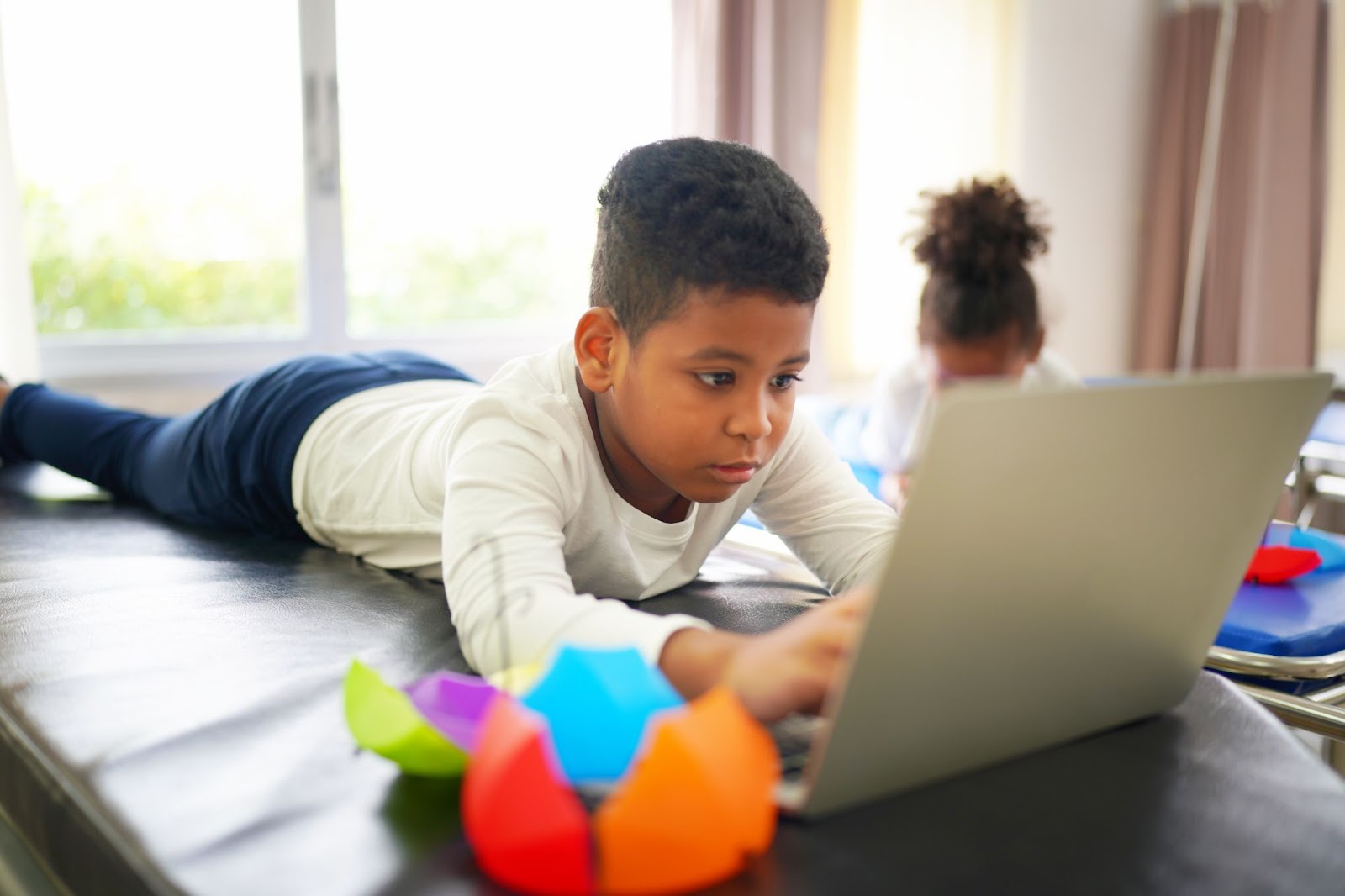10 Fun Virtual Classroom Activity Ideas for Engaging Learning
Virtual learning has come a long way, but keeping students energised and attentive remains a challenge. Whether you're teaching kids, teens or adults, the right virtual classroom games and engaging activities can transform a dull session into a memorable learning experience. In this guide, we share fun virtual activities for students that are perfect for schools, trainers, or anyone seeking to spice up their online class routine.
Table of contents
- Icebreakers and introduction games for students
- Creative online class activity ideas
- Interactive and play-based virtual activities
- Classic yet effective online class activities
- Pros and cons of virtual activities
- Conclusion
Using interactive and fun activities for students in online classes helps combat screen fatigue, encourages participation, and builds a sense of community. Virtual learning activities also improve retention and make concepts easier to grasp.
Icebreakers and introduction games for students
Starting a new class or virtual training session? Icebreakers are perfect for easing students into the online environment and setting a collaborative tone. These engaging activities help learners feel more comfortable, encouraging participation and connection from day one.
Mystery Classroom

One of the most popular virtual classroom games is a game called "Mystery Classroom." The teacher distributes cards to students, one per student, and each card contains a clue that can be solved by the team. When the teams have solved all the clues, they get to open their cards and see what they are supposed to do next.
No one likes a boring old classroom, so why not shake things up? Mystery Classroom games are a fun way to get students moving while they're learning complex topics.
This is a great way to keep students engaged and moving around the classroom while learning; it’s one of the top virtual classroom games on our list!
“Who am I?”
"Who am I?" is an engaging icebreaker where one student gives clues and others guess the identity.
Playing "who am I?" online, where one student writes a clue and others try to guess who they are by answering yes or no questions. Then students take turns until everyone has been guessed.
Where one student writes a clue and others try to guess who they are by answering yes or no questions. For example, if the person writing the clues says, “I am a teacher.” Students will answer yes or no based on whether they think that statement is true about the person in question.
If they answer yes, then they continue to ask another question until someone guesses correctly who it is or everyone has guessed wrong. Then students take turns until everyone has guessed and knows each other better!
This game also works well as an icebreaker at the beginning of class because it helps students get engaged with one another while learning more about themselves in social situations too!

Show and tell
Ask students to present an object from their home that’s meaningful. This introduction game for students opens up personal stories and encourages connection.
Here are some things you can talk about:
- Where do you live?
- How many brothers or sisters do you have?
- What activities do your parents enjoy?
Here are some things you can share:
- A picture of your house, if possible. If not, describe it as best as possible.
- Tell a story about a time when something funny happened in your home or how someone helped with the chores.
Creative online class activity ideas
When students are encouraged to think outside the box, learning becomes more exciting and memorable. These creative virtual classroom ideas tap into students’ imaginations and give them opportunities to express themselves while developing practical skills. Whether you're focused on arts, storytelling, or coding, there's something here for every kind of learner.
Virtual talent show

An engaging icebreaker where one student gives clues and others guess the identity. It's a fantastic way to get to know each other at the start of term.
- Decide who will be your judges and what criteria you want them to use.
- Choose a venue for the talent show, such as an auditorium or theatre for your virtual background.
- Decide on a theme, such as a “back-to-school” theme (you can even dress in school uniforms!) or simply have each contestant choose their own theme song. Using a music program like GarageBand on iPad Pro or Logic Pro X on Mac makes choosing and playing songs easy!
- Determine what type of performance each contestant must give: singing? dancing? writing poetry? telling jokes? Or maybe they need to perform all of these things!
- Select at least three contestants from each class at your school who may want to participate — more than three is fine too if there are enough performers for everyone's tastes. This way, there won't be any jealousy among students who didn't get chosen...and everyone will feel like they got their chance in front of an audience!
- Make sure that contestants know ahead of time when they'll be performing so they don't forget their lines when it comes time for them to go up on stage (or screen).
Classroom magazine project
Have you ever wanted to create your own magazine? Here's a cool way to do this in the virtual classroom - that is, using the internet. If you're using an online tool like Google Docs or Microsoft Word, you could use their built-in features to make a digital magazine. It's as easy as selecting all your content and choosing "create a magazine" from the menu (depending on which program you're using).
Once you've made it into a PDF file and uploaded it onto a website for others to read, we will be able to check out how great of work this was by viewing how many people have downloaded it! (mostly parents, though)
It’s a great way to get kids involved in the valuable skill of online content publication!
Creating a class virtual pet using the Scratch coding platform

If you’re looking for an easy way to create a virtual classroom pet, Scratch is the tool for you. With it, students can create their own pixel art and animate characters on screen. It’s also an excellent way to learn coding skills as students have the opportunity to test their coding knowledge as they go along. Similarly, exploring mobile game development services can enhance this learning experience by providing students with professional insights and tools to bring their creations to a higher level of sophistication.
Scratch is a project of the MIT Media Lab as part of its focus on promoting technical education for children.
The best part of using Scratch is that it's free! You don't have to worry about purchasing any software or buying supplies because everything you need comes with the program itself.
Scratch also has several features that make it easy for anyone who wants to learn more about programming. The first thing I like about this platform is how simple it is: all you need are two blocks of code (one block represents an action and another block represents an object). Then, if your child wants something specific from their characters such as movement or sound effects, they can search those terms within a menu system which helps simplify what might otherwise be confusing jargon!
Interactive and play-based virtual activities
Students often learn best when they're actively involved. These play-based virtual training activities are not only entertaining but also encourage teamwork, critical thinking, and movement. Whether it's acting out a scene or using AR to hunt for mythical creatures, these ideas bring energy and excitement into any virtual classroom.
Freeze-frame pantomime

- Use an interactive whiteboard to play freeze frame pantomime! Have a video of someone doing something funny and have students guess what they are doing. You can use the whiteboard to play charades, “Guess the Word” with your class, or “The Floor is Lava” (where one person stands in front of the board while everyone else sits on chairs).
- Alternatively, you could use it for hangman or karaoke! For example, нou could write out each person's name on separate lines on the whiteboard and then ask them to provide clues about themselves by drawing pictures according to their initial letter. If no one guesses their answer correctly within three tries, then they must take off an article of clothing until all the letters have been guessed correctly. The winner gets to go next time!
Online scavenger hunt
A scavenger hunt is a great activity to use with students who are new to your class and/or school. As you’re introducing students to each other, have students do a scavenger hunt around their homes or apartments. The items they choose reflect who they are and what interests them.
As an example, the first question could be “What is something you collect?” Then, for your second question: “Where did you get it?” These two questions will help build a picture of the student who answered them. If they answer that they collect rocks from all over the world, it suggests that they like to travel and that they have been to many places because rocks cannot be collected in one place!
Jackboox

Jackbox is a dedicated suite of actual social games that are designed to be played with friends in video calls. It’s popular with college students and online friend groups.
The only problem with Jackbox is that it can be a bit hard to moderate within the context of a classroom of children since the crux of its enjoyment comes from Madlib-like improv humour, which has a tendency towards the absurd and vaguely shocking.
While Jackboox isn’t the *only* contender for these types of games, it does serve to illustrate a trend and genre of social games designed to be played specifically in online communities. The other problem with Jackbox is that it’s not entirely free; someone has to buy a copy somewhere.
Though it does frequently go on sale on Steam so a party pack of Jackbox games can sometimes be picked up for only a few dollars. Only the host needs to buy a Jackbox to play.
Other similar dedicated social games usually require everyone to buy the game, so they can’t exactly make the list of recommended classroom games.
Augmented reality games
You can use augmented reality apps to play games like "find the dragon" and "find the alien" Here's how:
- Download an AR app that works with your phone. There are plenty of options out there, but one good option is AR Dragon (for iPhone). If you have an Android phone, another good choice is AR Lab (Android).
- Find a place in your classroom where students can stand or sit and see each other clearly. It needs to be free of clutter so that everyone can move around easily for games.
- Open up the app on your device and point it at yourself (or whoever else has been chosen as "the alien," if you're playing together) for about 15 seconds so that the app has time to create a digital image of you from its camera viewfinder screen. The app will then show a live-feed video of what this digital representation looks like—it could look like anything from a simple stick figure to something more complex depending on how long it takes for someone else's camera viewfinder screen (on their own device) to capture an image of yours in return!
From here on out, just follow along using whatever controls are available within this particular game; they'll vary based on which one you choose but usually involve tapping buttons randomly until something happens!
Classic yet effective online class activities
Sometimes, the most effective virtual classroom ideas are rooted in tradition. Classic online class activities like word games or group discussions still have a place in modern learning—especially when adapted for virtual environments. They provide structure, familiarity, and a comforting rhythm to sessions, while still being flexible enough to support interactive elements.
Pictionary and hangman
Technically even the equivalent of the TV cary and putting on a vaguely educational movie is available to online classrooms as well, as long as the virtual classroom supports embedded video. Pictionary is also another viable game to play online in your classroom if you have a multi-user whiteboard available.
The only drawback to classic games like these is that, while fun and familiar; they do tend to be a bit bland– perhaps especially so for online classroom environments.
Though, the ability to watch YouTube clips together with your class can be very fun and very educational.
But, assuming that you are using a virtual classroom that has the feature set to support these activities, you can absolutely resort to classic games that everyone is familiar with as an impromptu way of lightening the mood in your virtual classroom. Consider integrating educational games like math bingo or utilising resources like a 4th grade math tutor to make learning fun and interactive
Creating a video with classroom pets

To do this, you'll need to use a video camera or other recording device to record the animals. Next, have students take turns recording their own pet doing something fun and exciting.
Once recorded, upload your videos to a site like YouTube with titles like "Our Pets!" or "Our Class Pets" then share them with the class so everyone can enjoy them!
Pros and cons of virtual activities
Before diving headfirst into planning your next virtual classroom event, it's important to weigh the advantages and potential drawbacks. While virtual school activities offer a range of benefits, from increased engagement to flexible learning methods, they also come with challenges like tech limitations and the need for active moderation. Here's a clearer look at the pros and cons to help you choose the right virtual classroom ideas for your learners.
| Pros | Cons |
|---|---|
| Increases engagement | May require tech familiarity |
| Promotes creativity | Not all students have equal access |
| Encourages social interaction | Can distract from curriculum |
| Offers flexible learning styles | Needs careful moderation |
While your virtual classroom is likely not a place where you'll get to see your friends and classmates in the flesh, the experience of partaking in virtual classroom games is still plenty rewarding. Embracing educational games for children within this virtual setting further enriches your learning environment, offering an enjoyable and effective way to acquire new skills essential for success in your academic career.
You'll have access to new people and opportunities, as well as an opportunity to learn new skills that will help you succeed in your academic career.
FAQs
Games like "Who Am I?", "Show and Tell", and "Mystery Classroom" are great for breaking the ice.
Use interactive tools, gamify learning, and include multimedia content like videos or collaborative whiteboards.
A digital scavenger hunt is simple to run and encourages movement and creativity.
Yes! Tools like Scratch, Kahoot, and Digital Samba Free offer free options for engaging virtual activities.
Absolutely! AR apps like AR Dragon or Merge Cube enhance immersion in learning games like treasure hunts or science demos.
Digital Samba’s API allows full-featured video conferencing to be embedded into your e-learning platform with ease.
Conclusion
With the right mix of creativity and planning, you can make virtual learning dynamic and enjoyable. These virtual classroom activity ideas not only foster engagement but also build a positive, collaborative learning environment.
If you are still searching for the best virtual classroom tools, check Digital Samba. It is one of the best all-in-one virtual classroom solutions on the market, according to G2 reports.
Ready to make your online classes more interactive? Try Digital Samba for free or integrate our video conferencing API into your platform today.
Share this
You May Also Like
These Related Stories

Enhance Online Learning with Digital Samba’s Content Library

Setting Up a Virtual Classroom
.jpeg)
